|
|
|
|
Our History
A Union is Born
The Turbulent Years
The Conspiracy Trials
The Beginning of the
Morrin Era
The Depression and a New
Deal For Labor
World War II
Ironworkers Grow in the
1950's Part Two Part Three
John H. Lyons Jr.
Elected President
The Tradition Continues
Pathways to the 21st
Century Under The Leadership of General President Jake West
|
Part One
Dynamite transport conspiracy charges were brought against forty-six International and Local Union Officials in 1912. The Sixteenth Annual Convention that was scheduled for Peoria, Illinois in September was postponed for six months. The conspiracy indictments of several men from other trade unions kept the trial from being a strictly Iron Worker event. Other union men accused were California Building Trades officials Olaf Tveitmoe and Anton Johannsen; two United Brotherhood of Carpenters officials of Indiana, Spurgeon P. Meadows and Hiram Cline; Clarence Dowd, Machinists Union, Syracuse; and William K Benson, president of the Detroit Building Trades. Confessed dynamiter Ortie McManigal, who had been hidden away in the Los Angeles area and guarded by Local Law enforcement officers, and the McNamara brothers, who were serving their sentences at San Quentin, were also named as conspirators on the long list of Federal indictments. The Federal Government consolidated all indictments into one proceeding. General President Frank Ryan, acting Secretary/Treasurer Herbert S. Hockin, International Executive Board members and many of the most dedicated and diligent local officers were among the forty-six Ironworkers charged. The list of those
indicted included a
Early indictments were issued on December 30, 1911, against two Ironworker officials, Eugene A. Clancy, of San Francisco and James E. Munsey, of Salt Lake City, as well as California labor officials Olaf Tveitmoe and Anton Johannsen for "conspiracy to transport dynamite over Federal territory," according to the Los Angeles Record of December 31, 1911. The Indianapolis News of the same date reported that the indictments were "returned under United States laws controlling transportation of explosives in interstate commerce. Indictments were also issued at this time for Ortie McManigal, James B. McNamara and John J. McNamara. This was just the beginning. These seven men would be included in the sweeping Federal indictments five weeks later. Detective William J. Burns, the structural steel employer's hired hand, responsible for the McNamara and McManigal arrests, still maintained a wrong-headed belief that A. F. of L. President Samuel Gompers was involved in the conspiracy. He based his inane judgment on the fact that Olaf Tveitmoe and Gompers were friends - guilt by association. He also believed Tveitmoe to be the instigator and planner of the Los Angeles Times explosion. Burns and his open shop sponsors wanted desperately to entangle Gompers in the conspiracy. If they were successful in their efforts to enmesh America's most respected trade unionist, they would cause irreparable damage to the labor movement. Burns unethically tried to persuade the Government prosecutor to grant immunity to Tveitmoe, if he were to implicate Gompers. Tveitmoe would not lie about his friend to walk free, and was convicted. Later, the Appellate Court overturned his conviction. After the Federal Grand Jury in Indianapolis returned the fifty-four indictments on February 6, 1912, Ryan reported to the Iron Worker membership that the indictment list named "nearly all those who have served as International officers since 1906." Ryan also wrote that the executive director of the National Erectors Association, Walter Drew, "is reported to have said that he expected to break us financially before this case is finished." Ryan, Hockin, and John T.
Butler, First Vice President (and former General President) were arrested
at headquarters in Indianapolis on St. Valentines Day, February 14,
1912. As Butler put it, he "received a valentine in the form of
a warrant from ... a United States Marshall." The men indicted were arraigned on March 12, 1912, in Indianapolis, before Federal District Court Judge A. B. Anderson. To a man they pleaded "not guilty." Some observers and newspaper publishers and editors were surprised by the pleas, having expected guilty pleas. Judge Anderson set the trial date for October 12, 1912. Forty-six men, lined fifteen abreast, banked three deep, with one lonesome end, stood in the Federal Court room in Indianapolis to hear the charges against them. The group included forty-two Ironworkers. Several indictments had been dismissed. The trial sparked great interest, coming just one year after the McNamara's trial for the "Crime of the Century," as the newspaper tabloids called it. The conspiracy trial was not as sensational as the earlier trial. The public, however, was curious about, and were amazed by, the men who reportedly rode in rocking railroad cars with cases of dynamite and nitroglycerine they steadied with the balls of their feet, as they transported explosives to chosen sites. To bolster its case against the defendants, the Government brought Ortie McManigal under heavy guard from California. His affirmation in this trial was quite similar to his confession which implicated the McNamara brothers; however, he broadened his testimony to include several indicted Ironworkers about whom he claimed to have information. McManigal especially zeroed in on his supposed "control" and fleecer, International Secretary/Treasurer Herbert Hockin, with a vengeance. It was payback time. During the trial, Herbert Hockin was forced to resign as acting Secretary/Treasurer "by reason of the surrender of his bond in the case pending in the United States District Court," according to the Executive Board minutes. Hockin could not retain his financial office without bond; He resigned on November 28, 1912. The Board immediately appointed International Executive Board member Joseph E. McClory, of Local 17, Cleveland, Ohio, to fill the position until the next convention, in March, 1913, when Harry Jones was elected Secretary/Treasurer. Philip Taft in his labor history book The A. F. of L. in the Time of Gompers points out, "A member of the Executive Board, H. S. Hockin, testified against his colleagues." Since Hockin had been a prime player in the dynamite campaign from the beginning, he knew all the players involved - who did what, and when, and how.
Cases of some of the local officers who went on trial were dismissed; however, on New years eve of 1912, thirty-nine men were found guilty ans sentenced, including Herbert Hockin whose testimony against his fellow Ironworkers did not win him acquittal. Five men received suspended sentences, other sentences ranged from one year to six years, except for General President Frank Ryan, one of the oldest men. Judge levied the stiffest sentence against Ryan - seven years. All time was to be served at the Federal penitentiary in Leavenworth, Kansas. Union attorneys immediately filed appeals of their convictions.
Scroll to the top and click on "The Conspiracy Trials and Aftermath - 1912 to 1918 - Part Two"
[Home]
[Officers]
[Upcoming
Events] [Links
to Other Unions] |
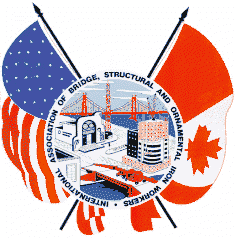
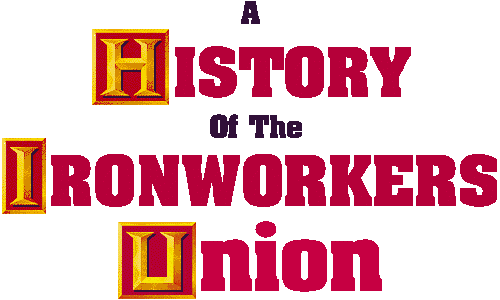
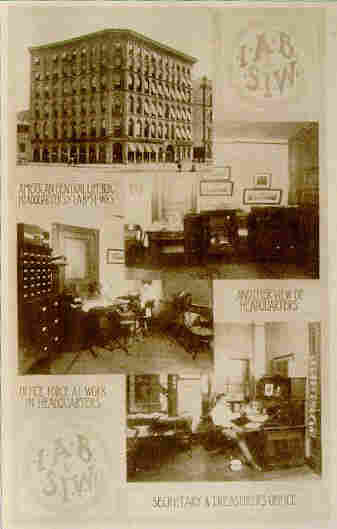
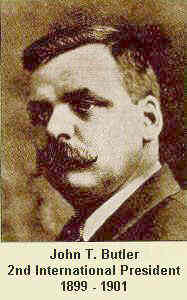
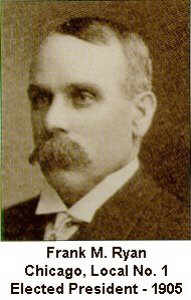
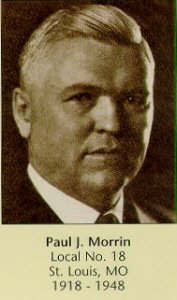
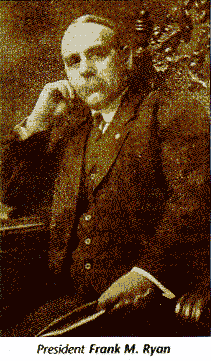 L.
L. Jewell, erecting manager of McClintic-Marshall Construction Company,
was a prosecution witness during the dynamite conspiracy trial. He
electrified the courtroom with his testimony that Hockin had informed him
of several planned explosions during the last half of 1910 and early
1911. Only with Jewell's testimony did the Iron Worker officials
positively learn what some had suspected, that they had an informant in
their midst.
L.
L. Jewell, erecting manager of McClintic-Marshall Construction Company,
was a prosecution witness during the dynamite conspiracy trial. He
electrified the courtroom with his testimony that Hockin had informed him
of several planned explosions during the last half of 1910 and early
1911. Only with Jewell's testimony did the Iron Worker officials
positively learn what some had suspected, that they had an informant in
their midst.